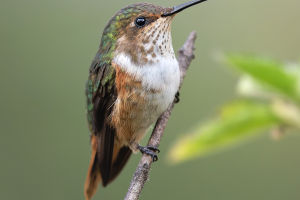At its peak, Australia's rabbit population exceeded 10 billion.
At first, there were no rabbits on Australian soil until the 1880s. It wasn't until 1859 that an Englishman brought 17 rabbits to his farm for hunting purposes.
However, he underestimated the ability of these rabbits, which were good at digging holes, and they were so good at reproducing that the rabbits increased geometrically on the farm, with a steady stream of rabbits digging holes and escaping to the outside, gradually going feral.
By 1920, the number of burrowing rabbits in Australia exceeded ten billion, occupying about 70 percent of the country.
The rate of rabbit proliferation in Australia has much to do with the special environment of Australia, in addition to the reproductive power of the burrowing rabbit itself.
As early as tens of millions of years ago, Australia was separated from other continents, which caused the uniqueness of the creatures here (mainly marsupials), and there are very few predators at the top of the food chain here, and the only fierce wolves are extinct, so there are no natural enemies to restrain the burrowing rabbit after entering here.
Secondly, Australia is mostly plain with a large area of sparse grassland and semi-desert, which is what the burrowing rabbit likes best.
Therefore, with the combination of strong reproductive ability, no natural predators, and a suitable environment, Australia has become a haven for the burrowing rabbit.
The Australians would not let the invasive species swell, but as a herbivore, the ecological damage caused by so many burrowing rabbits was alarming, and the increased desertification of desert areas and the degradation of grassland vegetation was a huge blow to the "people on sheep's backs", so from the mid-19th century onwards Therefore, from the mid-19th century onwards, Australia began to round up rabbits.
According to incomplete statistics, about 2 million rabbits were hunted each year, but this was a drop in the bucket for the rabbit reproduction rate.
Later, Australia introduced the red fox, a natural predator of rabbits. But to their surprise, the red fox also began to proliferate, and instead of simply hunting burrowing rabbits, they targeted native birds and small mammals, and to protect native species, Australia began hunting red foxes again.
To keep the burrowing hare from spreading, Australia spent a lot of money and manpower to complete Rabbit Proof Fence No. 1 in 1907, which is 1,834 km long, the longest uninterrupted fence in the world.
For the burrowing rabbits, this fence was a virtual non-starter and did nothing to stop their spread.
To this day, although Australia uses various methods to contain it every year, the population of burrowing rabbits remains between 100-200 million, and these burrowing rabbits still cause losses of about $200 million per year, and the problem of the burrowing rabbit invasion has still not been completely solved.


